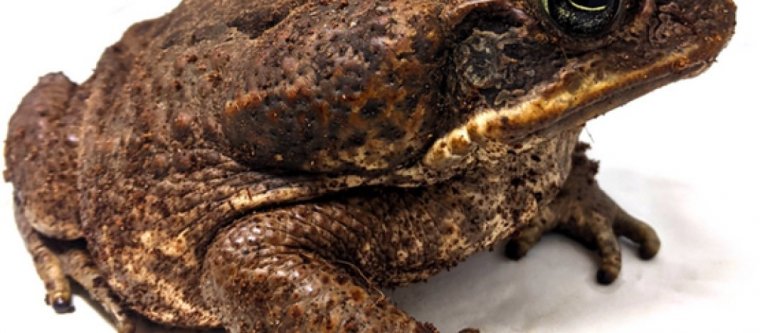| News / Science News |
A hard pill bug to swallow: First X-rays of frog feeding show how they consume prey
The phrase "to swallow one's tongue" has been around since at least the 1880s and has been repurposed in several languages to mean everything from falling silent to a general feeling of fear. While it's anatomically impossible for a human to swallow their tongue, a new study shows that cane toads (Rhinella marina) achieve this feat each time they eat.

Cane toads are among the largest frogs, making them perfect for a study of their movements when eating. Photo: Rachel Keeffe
Scientists at the Florida Museum of Natural History used X-ray videography to study the toads' feeding behavior, providing the first glimpse of what frogs do with food once it's safely in their mouths.
According to the results, cane toads swallow prey using a complex pulley system of cartilage and muscle that travels so far down their throats, it butts up against their hearts.
"We know a lot about how frogs extend their tongues and how they stick to their prey, but prior to this study, essentially everything that happens after they close their mouths was a mystery," said lead author Rachel Keeffe, an NSF Graduate Research Fellow.
Richard Blob of Clemson University, David Blackburn of the Florida Museum of Natural History and Christopher Mayerl of Northern Arizona University are co-authors of the study.
It wasn't until the development of high-speed video in the mid-20th century that scientists were able to directly observe the way frog tongues unroll like party horns and wrap their hapless targets in adhesive hugs.
Even then, scientists could only guess at how they swallowed their food. Some theorized that frogs used their tongues to directly deposit food in their throats, while others suggested they pushed food along by squeezing their eyes shut.
To find out how frogs manipulated their food, Keeffe and her colleagues attached metallic beads at key points in the mouths of cane toads.
Reaching up to six inches in length, cane toads are one of the largest frog species, which made them the perfect specimens to observe the rapid and minute movements they make when eating. (U.S. National Science Foundation)
YOU MAY ALSO LIKE





